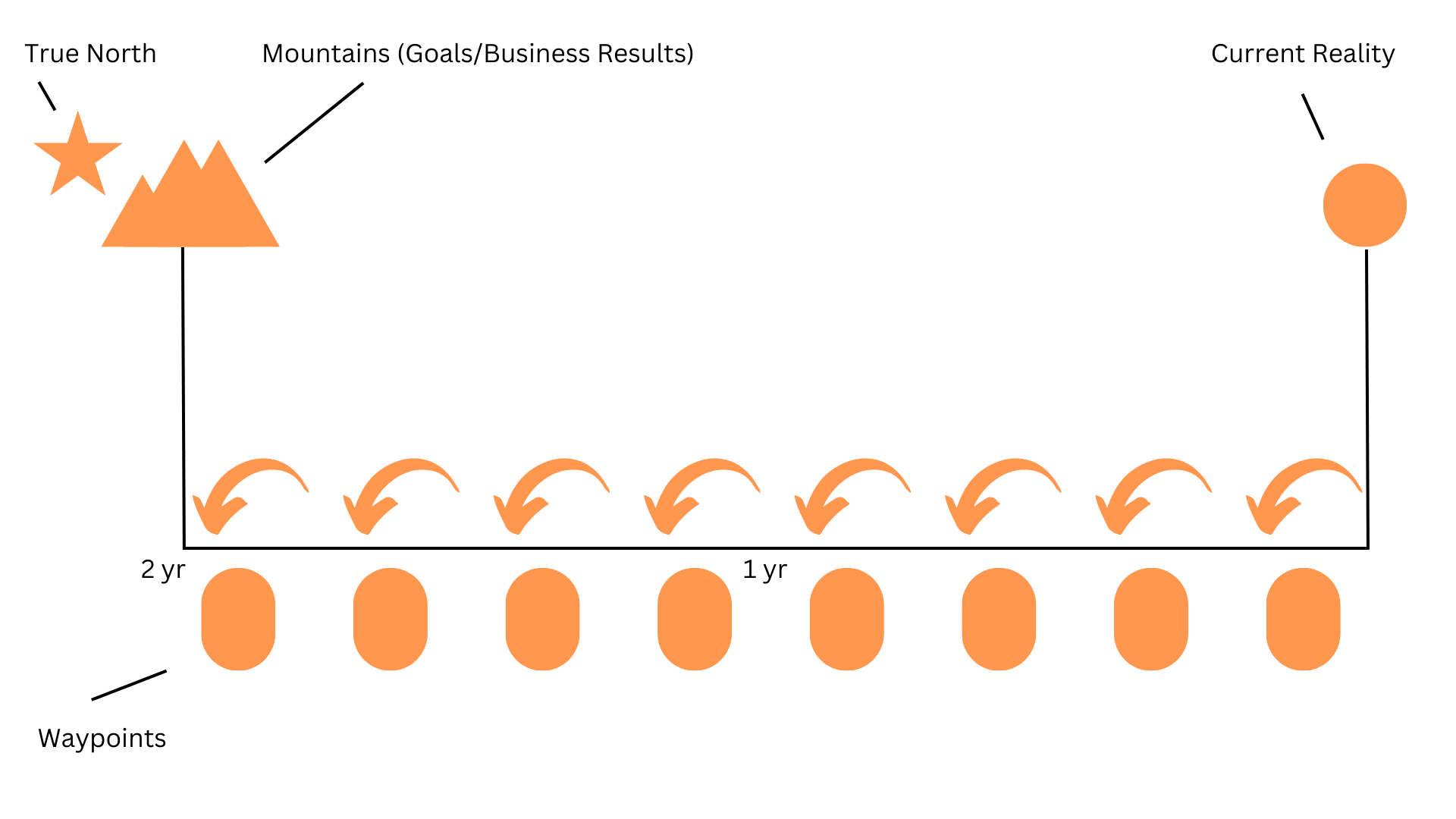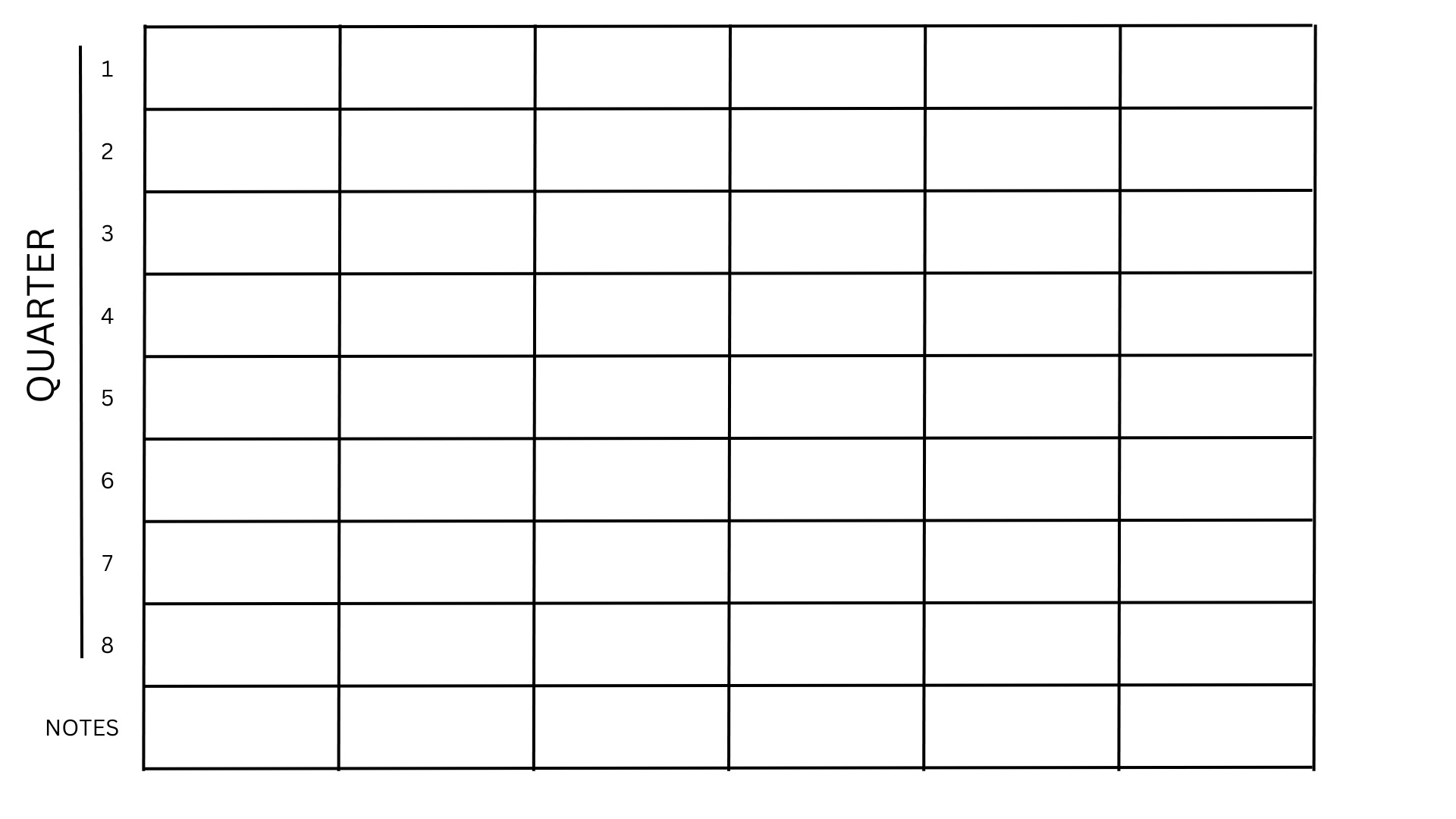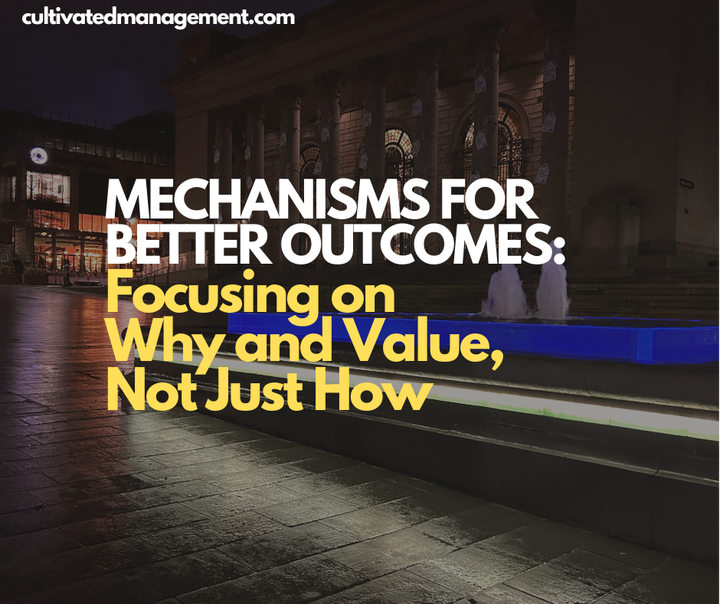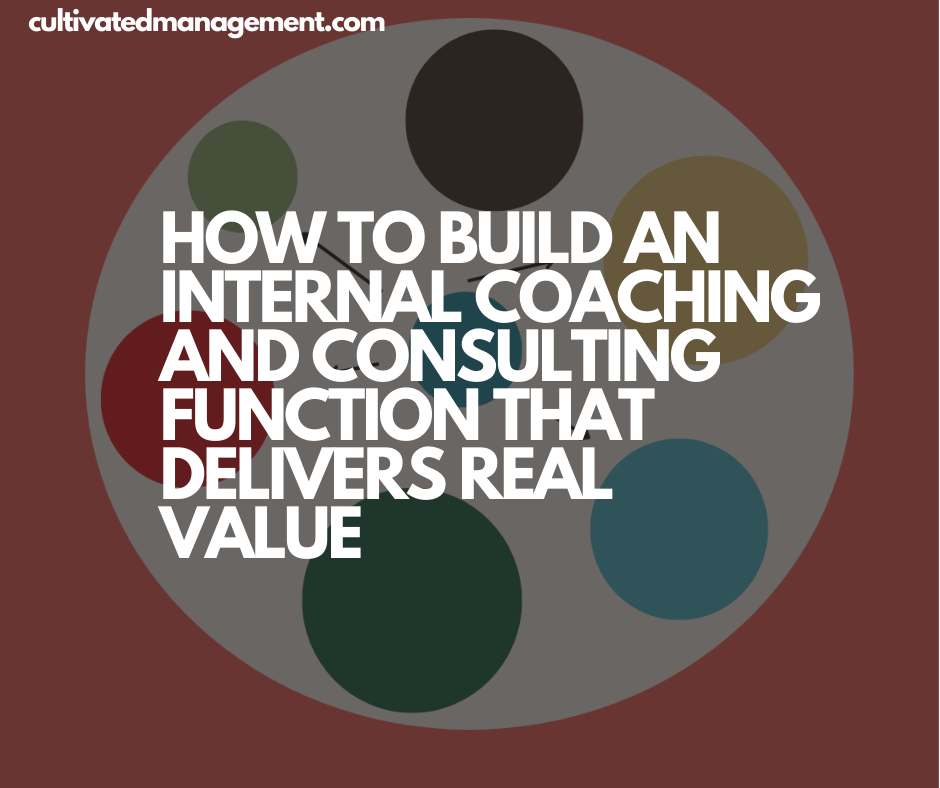Backcasting: A Powerful Method to Build a Bright Future
Learn how backcasting can help you plan effectively by starting with your desired future, identifying key steps, and creating actionable strategies to achieve your goals.

At Cultivated Management, I help companies imagine bright futures and release agility to achieve them. One of the most powerful tools I use in workshops is future casting, where teams explore and build tangible representations of their desired future.
A key exercise in these workshops is backcasting, which helps teams move from current reality to ambitious business goals in a structured way.
Step 1: Define True North – Painted Picture + Goals
The first step is creating a True North or a painted picture of the future. This represents:
- The value your business delivers
- How your company will operate differently
- A compelling, aspirational vision
To make it tangible, leaders often build:
- Posters or paintings
- Physical representations like stars or mountains
The mountains represent measurable goals and outcomes that will move the business closer to True North. Reaching the mountains delivers tangible results, even if the ultimate True North remains slightly out of reach.
Step 2: Backcasting – Mapping the Journey
Backcasting is about creating a tactical roadmap to reach your goals. Here’s how it works:
- Draw a backcasting line: Mountains (goals) on the left, current reality on the right.
- Define waypoints between now and the mountains – typically 8 for a two-year horizon.
- Start by imagining the last waypoint, just before reaching your goals. This helps teams think beyond linear or incremental paths.
- Work backwards, populating the line with intermediate milestones, key changes, and solutions to challenges along the way.
Tip: Avoid relying solely on “more of the same” (more people, more money). True agility comes from solving core problems, optimising routines, and removing obstacles.

Step 3: Build the Tactical Grid
Once waypoints are identified, we translate them into a grid, usually 6×8:
- Columns: Quarters or time periods
- Rows: 6 tactical initiatives or problems per quarter
The grid encourages focus and prevents overloading the team. Each cell represents a measurable change or improvement needed to progress toward the next waypoint.
Example Waypoints:
- Q1: Stabilize live platform, fix low performance, implement HR recruitment policy, align sales messaging
- Q2-Q8: Incrementally build on progress toward business goals
The grid provides a flexible tactical plan – it’s not rigid, but serves as a foundation for action, prioritisation, and continuous improvement.

Step 4: Leadership and Communication
A successful backcasting exercise requires:
- Assigning owners for each initiative
- Tracking progress in a work management tool
- Communicating the plan clearly throughout the organization
- Reviewing milestones regularly to prevent “watermelon reporting”
Leaders must also decide what work stops to free capacity for high-priority initiatives. True business agility comes from focus and smart prioritisation, not just adding more resources.
Backcasting for Personal Life
The backcasting method works beyond business. You can:
- Paint a picture of your ideal life
- Set mountains (personal goals)
- Identify waypoints to guide progress over time
This approach helps you create a clear path from current reality to desired outcomes, whether in business or personal life.
👉 Ready to move faster towards your business goals while building a workplace people love? I help managers and leaders get there—through coaching, consulting, and training. See how I can help you.


